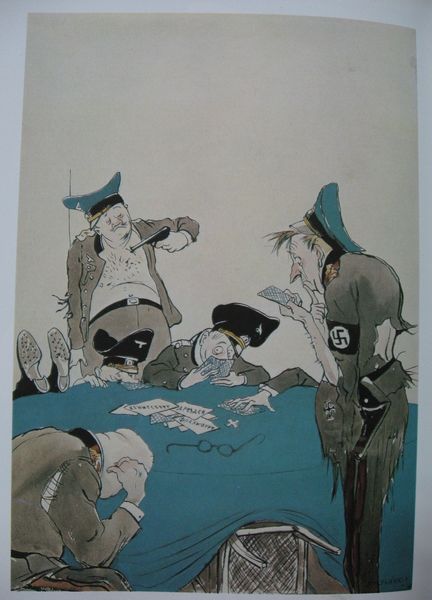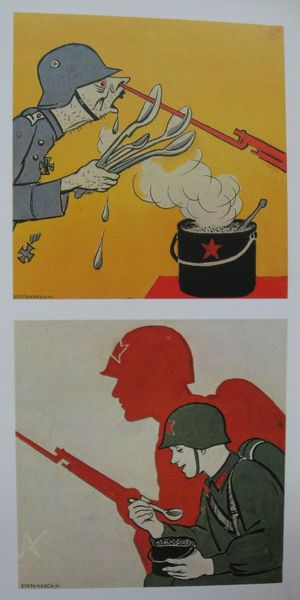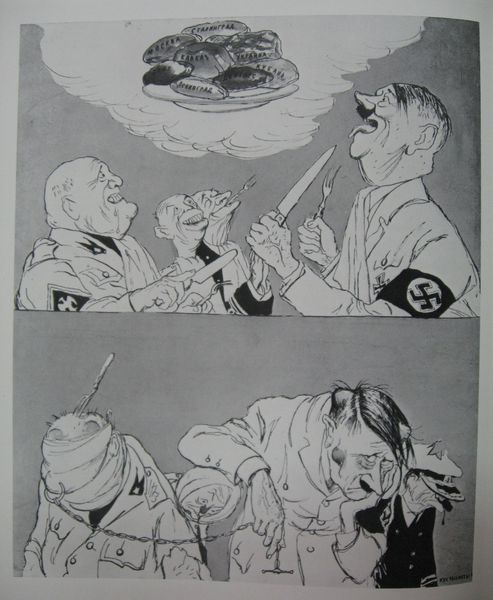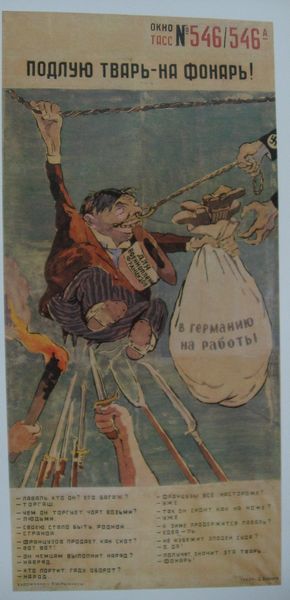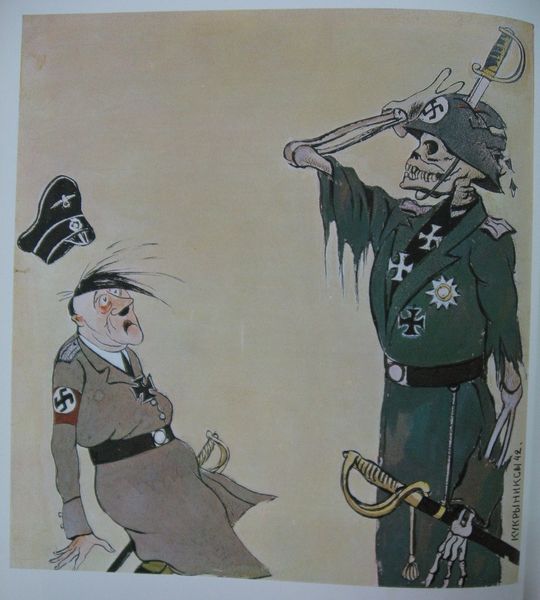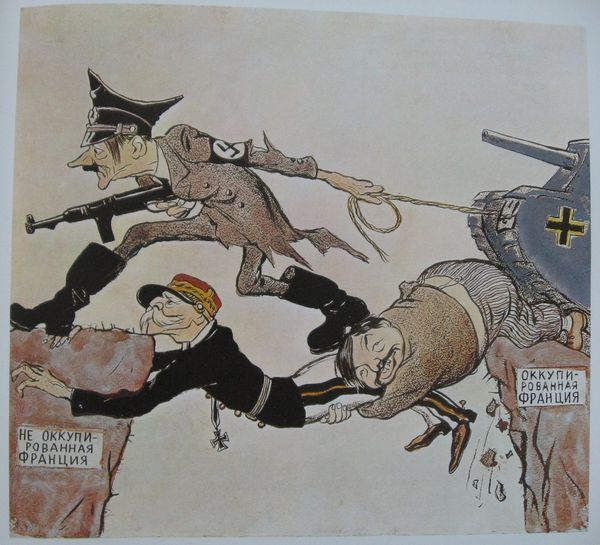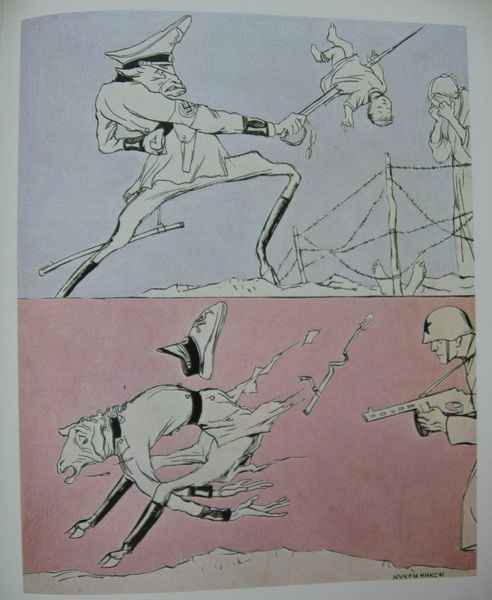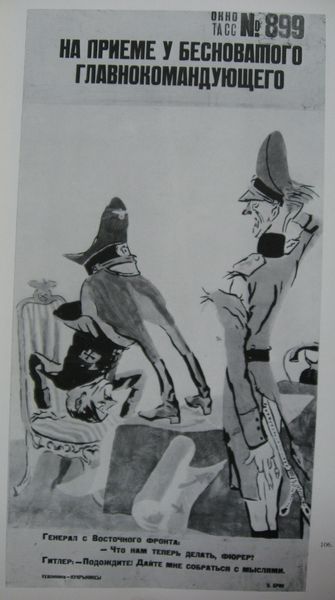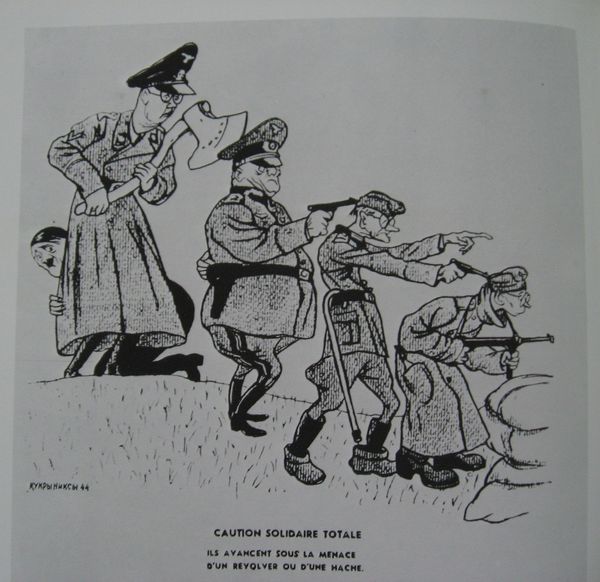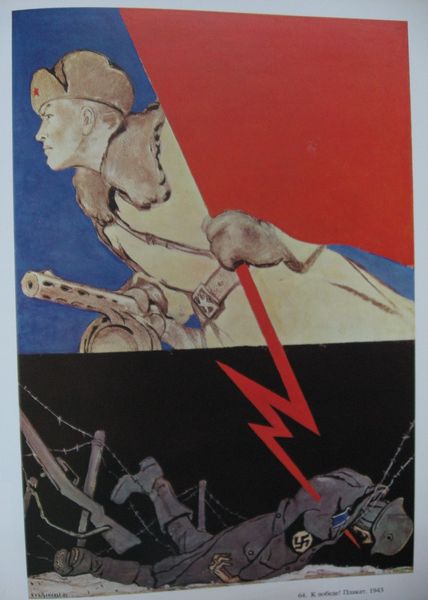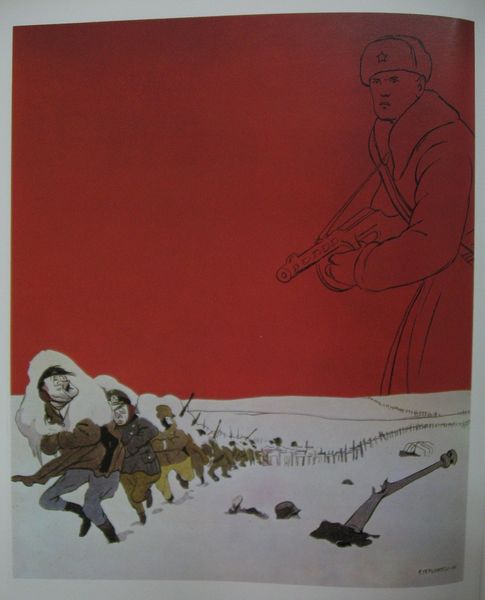
graphic-art, painting, print, watercolor
#
graphic-art
#
water colours
#
narrative-art
#
painting
# print
#
caricature
#
war
#
soviet-nonconformist-art
#
social-realism
#
text
#
watercolor
#
modernism
#
watercolor
Copyright: Kukryniksy,Fair Use
Curator: This watercolour painting with the stark title "We Repay" was created in 1941 by the collective known as Kukryniksy, during a critical moment in World War II. It offers a vivid visual narrative in two parts. What strikes you most when you first look at it? Editor: It's brutal, immediately and viscerally so. The two panels create this satisfying sense of justice. You have the arrogant, almost comical Nazi officer in the first panel, juxtaposed against the grim reality of the second. The axe poised to strike and severed head still smoking from a cigar. There's a very clear message of violent retribution. Curator: Precisely. It serves as a prime example of Social Realism employed as propaganda during the Soviet era. Note the caricature of the Nazi officer, exaggerated features meant to dehumanize. What do you think of those details? Editor: Caricature definitely softens the blow. Yet it doesn’t diminish its potent symbolism. The German is drawn with contempt - literally defaced. Even something like the peasant's garb speaks volumes, emphasizing the defender of native soil against foreign invasion. It pulls on very fundamental archetypes: The oppressor and the protector. Curator: This is fascinating because that very narrative shaped Soviet self-perception throughout the war and decades after. “We Repay” helped cultivate an image of righteous resistance, uniting diverse populations against the foreign threat, a myth further galvanized by things like the Nazi invasion of Ukraine. It solidified Soviet national identity in real-time. The brutal resolution depicted here reinforced that political goal. Editor: The title "We Repay" is particularly resonant. This wasn't just resistance; it was a direct, personal retribution. It's tapping into something primal, a dark part of the collective psyche—an eye for an eye, amplified onto the canvas of war. What do you think? Curator: It brings up complexities when considering the purpose and consequences of visual propaganda. This wasn’t an objective representation; it was about galvanizing action, inspiring hatred for political and social purposes, weaponizing fear. It highlights art’s instrumental role in shaping ideologies, both positive and destructive. Editor: Yes, images remain vessels carrying potent ideas across generations, and seeing one deconstructed helps reveal something essential about human memory. Curator: Absolutely, it allows us to better consider its reverberations today.
Comments
No comments
Be the first to comment and join the conversation on the ultimate creative platform.
